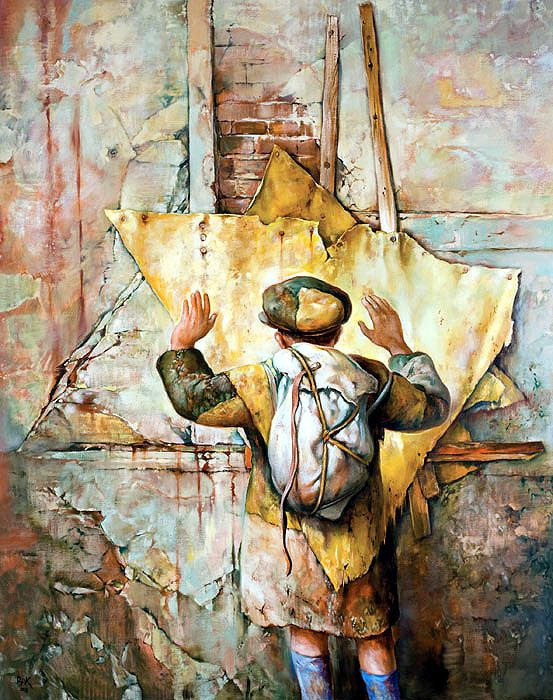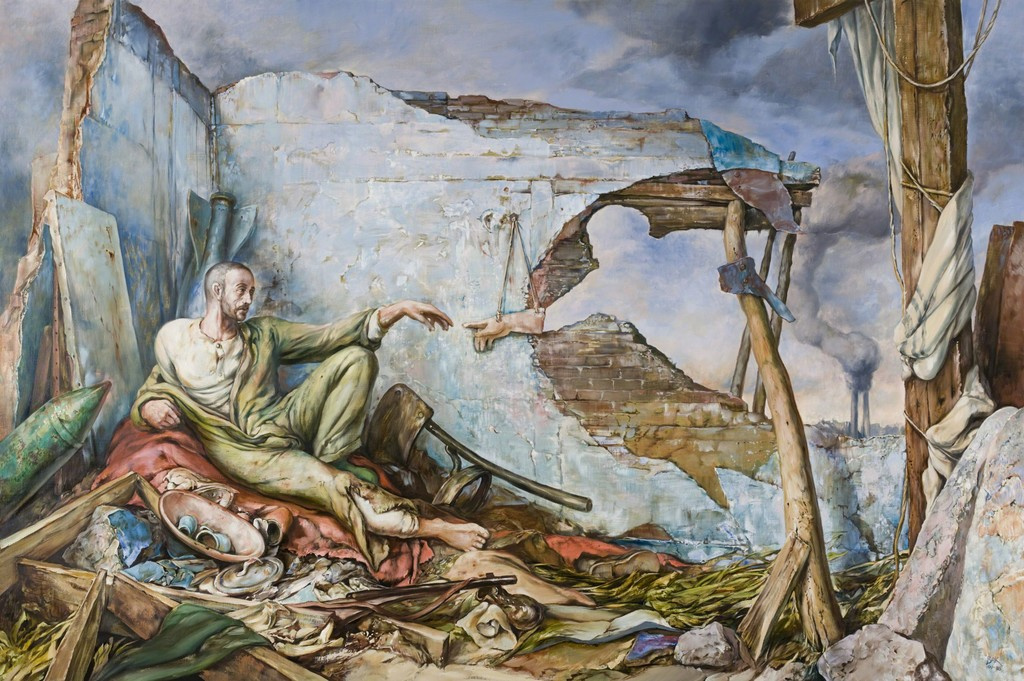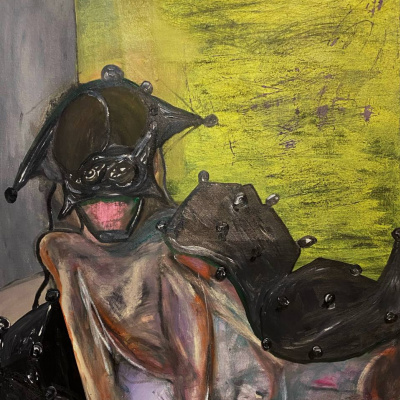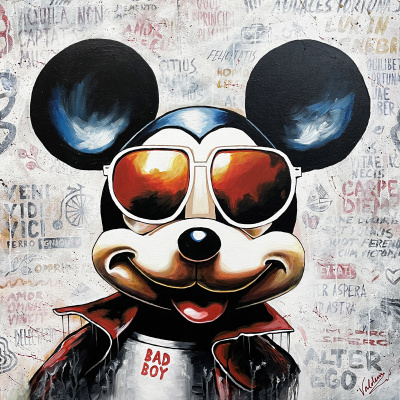A Holocaust survivor, the American painter Samuel Bak donated more than 60 of his paintings—with many more to come—to the Samuel Bak Museum, which was solemnly opened at the end of November 2017 as an official state-funded branch of the Vilna Gaon State Jewish Museum in Lithuania. His allegorical works mostly inspired by wartime horrors experienced by him as a Jewish boy in the World War II Vilna Ghetto.
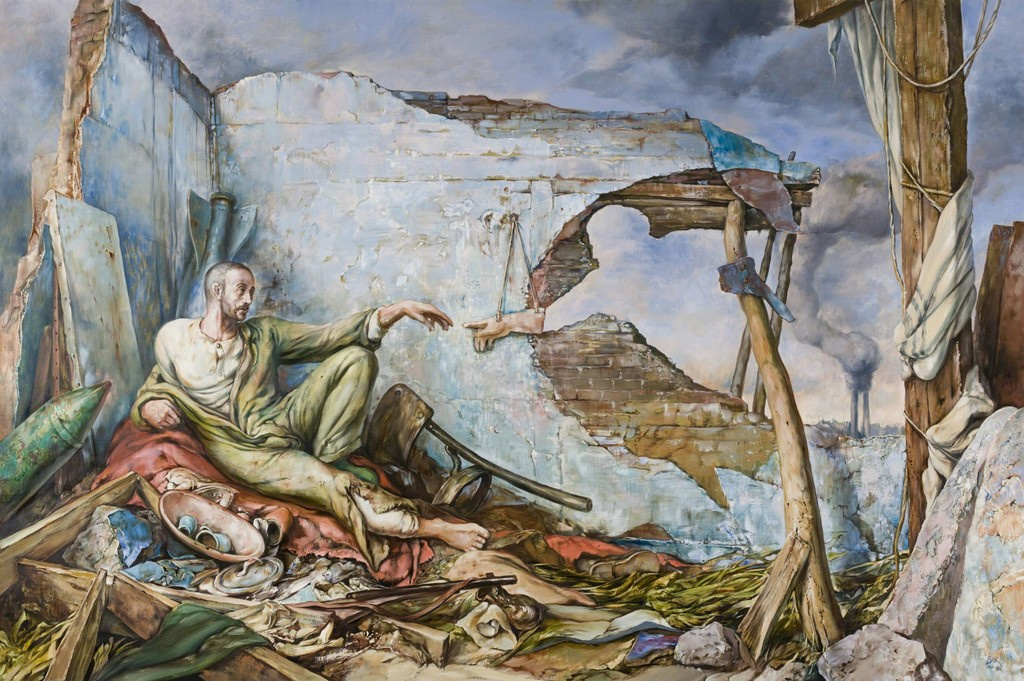
First exhibition of Samuel Bak, a nine-year-old prodigy, took place about 75 years ago in Vilna ghetto
1941−1944 was a desperate and horrible period for Jews in Lithuania. The Nazi Germany invaded Vilna as part of Soviet Union at the time, and set up two Jewish ghettos in the old town centre for the large Jewish population. Around 60,000 Jews lived in Vilna at that time, they constituted half of the total population. In the Jewish world the city was known as the centre of enlightenment, the capital of the Jewish political, cultural, educational, and religious life, "The Jerusalem of Lithuania."The Vilna ghettos were among the largest in Europe, they imprisoned those who were not murdered at the time. All Bak’s extended family were donned with the yellow Jewish badges made by Samuel and driven to the ghetto. All but him and his mother, who fled from it, and with the help of Samuel’s grandfather’s sister, took shelter in the city’s Benedictine convent, where the nun Marija Mikulska hid and cared for twelve Jews in the nunnery’s archive. She took Samuel under her wing and supplied him with paint and paper.
Unfortunately, the Germans suspect the convent of collaborating with Soviet forces, and placed it under military jurisdiction. Bak and his mother were forced to flee again, returning to the Vilna ghetto. There, in March 1943, two of Vilna’s acclaimed Yiddish poets, Avrom Sutzkever and Szmerke Kaczerginski invited nine-year-old Bak to participate in an exhibition organized as a cultural event among other plays, concerts, and poetry readings within the ghetto.
Samuel's father managed to save his son and wife twice before he was killed in the Ponary massacre
During the liquidation of the Vilna ghetto in 1943, Bak’s father managed to save his wife and son by having them transferred to the nearby Slave Labor Camp, where he worked as a dental technician. In March 1944, in the fear of coming SS children’s aktion, aiming at killing 250 camp’s children, Bak’s father again managed to save his wife and son by smuggling them out of the camp and back to Vilna.Bak and his mother once again found hiding in the Benedictine convent, where they hid for the last eleven months of the war, practically entombed in piles of convent’s books and documents of a Nazi repository. Though they survived, his father was shot to death in Ponary in July 1944, ten days before Vilna’s liberation by the Soviets. He was one of 100,000 Jews killed in the forests near Ponary, Vilna’s suburb, that is one of the 265,000-Jewish population of Lithuania murdered by the Germans. And he was one of the extended Samuel’s family slaughtered by Fascists.
"When in 1944 the Soviets liberated us, we were two among two hundred of Vilna’s survivors—from a community that had counted 70 or 80 thousand," Samuel Bak described his liberation.
Post-war period: time of wanderings and art studies
At the end of World War II, Bak and his mother as pre-war Polish citizens, fled to central Poland, at first settling briefly in Łódź. They soon left Poland for good and traveled into the American occupied zone of Germany. From 1945 to 1948, they moved from one Displaced Persons Camp to another, and spent much time at the Landsberg Camp, where Samuel enrolled in painting lessons at the Blocherer School in Munich. He frequently visited the city’s museums and became familiar with German expressionism . Later he said that his real teachers were museums.In 1948, the family was allowed to immigrate to the newly established state of Israel. In 1952, Samuel Bak, aged nineteen, had studied at the Bezalel Academy of Art and Design in Jerusalem.
After serving in the Israel Defense Forces, he continued his studies in Paris at the Ecole Nationale des Beaux-Arts. In three years he moved to Rome and had a solo show of his abstract and semi-abstract paintings at the Robert Schneider Gallery in Rome. He was pretty successful in Europe, Israel, and the United States. He was invited to exhibit at the Carnegie International in Pittsburgh, PA, followed by solo shows at the Jerusalem and Tel Aviv Museums in 1963 and at the Venice Biennale in 1964.
Spending various periods of time in Rome, Switzerland and Israel, he finally settled permanently in the United States.
By the time Samuel Bak was thirty, he realized that the abstract style he had mastered was not sufficient to deal with the enormous traumatic experience of his childhood
"My dealer was contented and the critics praised me, but I sensed that I was moving toward a dead end," the artist wrote of that period. "I had a feeling that instead of unfolding my story, the abstract paintings were suppressing it."As Bak wandered across countries, his silent grief developed into awareness that he could no longer keep the burden of horrible memories locked inside. It was the point when he has drastically changed his style. He made a distinct shift from abstract forms to metaphysical figurative means of expression in his artworks. Samuel began a journey into the recesses of his own identity, which culminated in a direct confrontation with his childhood memories. He realized that his burden was part of his own selfhood and therefore bound to be the essence of his art.
From then on, Bak has spent his life dealing with the artistic expression of destruction and dehumanization, the unspeakable atrocities of the Holocaust. He has created a set of metaphors, a visual language that ultimately privileges questions and works as a reminder to the world of the most desperate moments.
"I know that what I have been painting comes from a compulsive need to give meaning to the miraculous fact of my survival. It tries to appease a sad sense of bewilderment. It comes from the fear that in a world of unparalleled upheavals, things are never what they seem. My work reveals a reality observed through the eyes of a child who had suddenly aged. Some might call it elaboration of Trauma; I hope that my art is more than that."
Icon of Loss, Identity
2008, 152×122 cm
As a conceptual artist, Samuel Bak subsequently developed his own visual language and used elements of post-modernism derived from different art styles
His works are frequently characterized as a resurrection of pre-war surrealism , reminding us of Salvador Dali and René Magritte. Similarly to the surrealists, Bak uses detailed textures and radiant colors to create fantastic scenes of depth and complexity. However, extremely non-lifelike situations rendered by Bak do not mirror his subconscious mind, as surrealists attempted, but rather create metaphorical scenes to represent his conscious experience."Safe Passage" (right) fetched USD 56,250 at Christie’s in 2014. It’s the artist’s most expensive art work sold at auctions.
In Bak’s works we can trace features from analytical cubism
that brought fame to Picasso and from pop art popped up by Andy Warhol and Roy Lichtenstein. And herewith we find his quotations from the Old Masters. He turnes the most famous Albrecht Dürer's engraving
"Melencolia I" (1516) and Michelangelo's "Creation of Adam" (1511/12) into ironical statements. But they are not meant to parody or deride but rather to disenchant and distance from pain. Bak uses these images as an allegory and a metaphor.
Reflecting
1999, 102×81 cm
In his "Creation of Wartime III" (bellow) we see two crematorium chimneys and guess of a vast landscape
background that symbolize the scenes of mass death and indifference of the outside world. They complement broken and damaged image of a house and complete mess with battered crockery, once being a part of a household, in the foreground.
Creation of Wartime III
127×190.5 cm
These symbols are recurring in Samuel Bak’s art works. He never paints scenes of mass death straightforward. Instead, his visual language is allegorical. He uses toys to picture murdered children or books instead of readers who never got finished them.
Bak’s paintings create discomfort, they warn against complacency. He uses his personal painful experience of genocide to provide a bulwark against collective amnesia with reference to all acts of barbarism, happening in the world at all times.
Bak’s paintings create discomfort, they warn against complacency. He uses his personal painful experience of genocide to provide a bulwark against collective amnesia with reference to all acts of barbarism, happening in the world at all times.
The Cup Was Full
2007, 61×50.8 cm
The most recurring symbol in Bak's late paintings is a boy with his hands up, based on the the well-known photo of the Jewish boy from the Warsaw Ghetto
The artist wrote about the photo bellow, "I could not help reflecting on the countless millions of children that perish in man’s senseless conflicts, wars, and genocides — past and present. I thought, 'What an unspeakable abuse of our young innocents, our little just ones!'"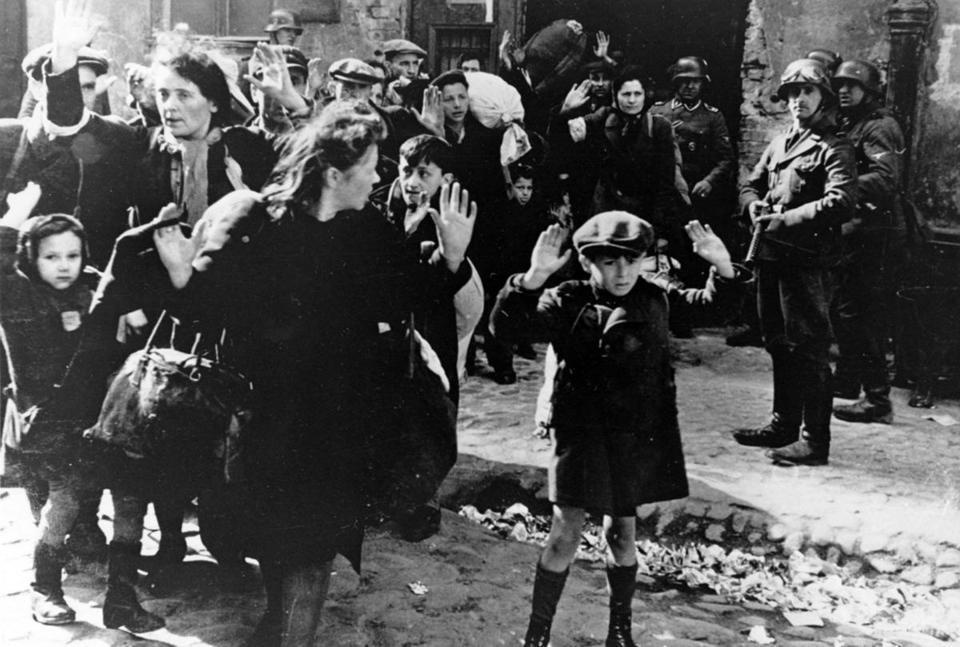
"Pulled from the bunker by force," Warsaw Ghetto, April-May, 1943.
One of the photographs from the album, a birthday present for Heinrich Himmler,
entitled: "THE JEWISH QUARTER OF WARSAW IS NO MORE,"
assembled by Jürgen Stroop, the commandant charged with the Warsaw ghetto cleansing
One of the photographs from the album, a birthday present for Heinrich Himmler,
entitled: "THE JEWISH QUARTER OF WARSAW IS NO MORE,"
assembled by Jürgen Stroop, the commandant charged with the Warsaw ghetto cleansing
When studying this photograph, Samuel Bak observed, "Arms that reach for the sky are also a gesture of surrender, of giving up. When you superimpose the image of a crucified Son on that of the little Warsaw boy with his uplifted arms, you are made to wonder, Where is God the Father?"
Bak has always sought to find the universal in the specific. He created dozens of the Warsaw Ghetto Child versions, incarnating boy not only as flesh, but also implanting him in wood, stone and brick.
Bak has always sought to find the universal in the specific. He created dozens of the Warsaw Ghetto Child versions, incarnating boy not only as flesh, but also implanting him in wood, stone and brick.
Samuel Bak, now a 84-years-old gray man who became a famous American artist, has returned to his hometown Vilnius, remembering the city as a little boy from his canvases.
"I have lived in so many different countries. But I am from Vilna, I identify myself with this city," he told AFP.
"For me to be here is somehow to come back to the very beginning of the beginning. It is also a possibility to express my gratitude to Christians who helped me survive," he said before the opening ceremony of the Samuel Bak Museum attended by several hundred people.
"I have lived in so many different countries. But I am from Vilna, I identify myself with this city," he told AFP.
"For me to be here is somehow to come back to the very beginning of the beginning. It is also a possibility to express my gratitude to Christians who helped me survive," he said before the opening ceremony of the Samuel Bak Museum attended by several hundred people.

Moments of opening event at Samuel Bak Museum, Vilnius, Lithuania. Photo credit: Jokūbas Jarmalavičius.
Written on materials by artdaily.com, yiddishbookcenter.org, yadvashem.org, facinghistory.org, zeek.forward.com, jmuseum.lt, puckergallery.com, alchetron.com, eilatgordinlevitan.com. Title illustration: Petras Malukas / AFP.






